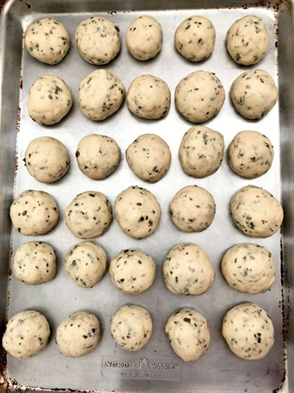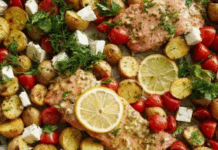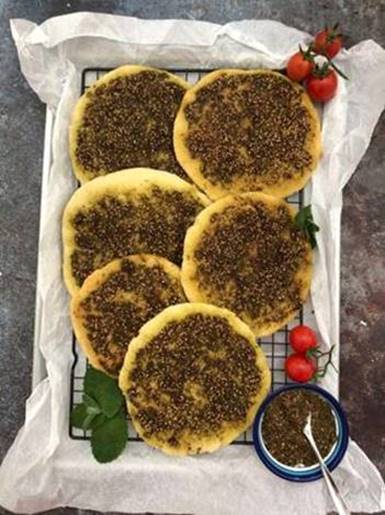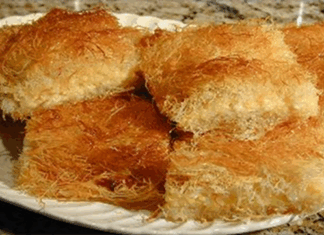This recipe for Za’atar Bread Cheese Balls comes from the kitchen of the Palestinian author and blogger Wafa Shami. Za’atar is a culinary herb or family of herbs. It is also the name of a savory spice mixture that includes the herb along with wild oregano, marjoram or thyme, cumin, coriander, toasted sesame seeds, dried sumac, often salt, as well as other spices. If you’ve never tried this Middle Eastern spice blend, get ready to fall in love. It has a nutty, earthy and tangy flavor. It is delicious on breads, dips, and much more.
For Palestinians, za’atar has historical significance; some consider its presence to be a sign of a Palestinian home. For Palestinian refugees, plants and foods such as za’atar also serve as signifiers of the house, village, and region from which they hailed. “Za’atar is an herb used in many recipes in Palestine. One of the most popular is the dried ground za’atar mixed with spices and sesame and dipped in bread with olive oil, or sprinkled over chicken, beef, lamb, fish, or salads,” says Shami. “The herb is a rich source of important vitamins such as B-complex vitamins, beta carotene, vitamin A, vitamin K, vitamin E, vitamin C and folic acid. It is worth mentioning that studies have shown that za’atar may have great health benefits for memory and the brain.”
“Spring is the za’atar season, and that is when the fresh za’atar recipes appear. I love these bread balls stuffed with white cheese, they can be made ahead of time and stored in the freezer. They are light, filling, and can be a pleasing side dish for any gathering, or a snack for the kids, my son really loves them,” she adds. “Za’atar is comfort food and celebrated in Palestine and across the Middle East. For example, for ‘Manakeesh’ (za’atar pizza), combine equal amounts of olive oil and za’atar, and spread on bread and toast or on a pizza crust and bake. Top with cheese if desired. It is perfect for sprinkling on pasta, pizza and other foods.”
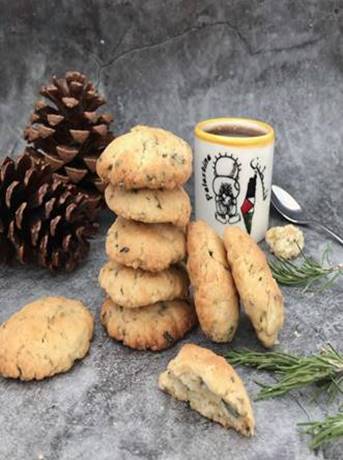
According to the Love & Lemons food blog, once you have za’atar on hand, there are many ways to use it, such as:
* Stir it into olive oil to make a dip for pita or crusty bread as an easy, flavorful appetizer.
* Sprinkle it over hummus, baba ganoush, or white bean dip topped with a drizzle of olive oil. (Don’t forget the fresh veggies or pita for dipping.)



